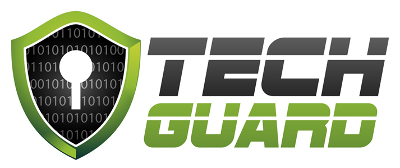
The Irish News has reported that a major data breach has exposed every serving officer’s personal data online. Almost 10,000 officers and staff members have been affected.
For almost three hours, several types of personal metadata were available for the general public to see. Authorities believe undercover officers could have been exposed, and may be unable to continue their work. In general, a rise in the risk of terrorist attacks against serving officers is feared to have increased.
The data breach happened after a freedom of information request led to an unfortunate, self-inflicted error. No foul play has been suspected, but the damage is major and widespread.
In all workplaces, the importance of data protection cannot be overstated. We all handle vast amounts of sensitive information on a daily basis. Steps can be taken to safeguard and protect information, but human error remains a significant vulnerability that can lead to data breaches.
How Can an Employee Slip Up?
Human error encompasses a range of accidental, ill-advised actions which compromise data security. These errors are often the result of negligence, distraction, or inadequate training. Here is a list of common mistakes:
1. Misdirected Emails
Sending sensitive information to the wrong recipients due to incorrect email addresses or autocomplete mishaps, mistaking similar email accounts.
2. Lost or Stolen Devices
Misplacing laptops, smartphones, or USB drives containing confidential data, creating opportunities for unauthorized access e.g. forgetting a hard drive on public transport or at a hotel.
3. Unauthorised Sharing
Accidentally sharing confidential documents on public platforms or cloud storage services with inadequate access controls, or granting unauthorised people access to metadata.
4. Improper Data Disposal
Personal data is subject to GDPR laws which dictate proper disposal methods. Inadequately deleting or disposing of physical and digital records leaves sensitive information exposed.

How Can I Minimize the Risk of Human Error?
We at Tech Guard provide a Security Awareness and Training program that trains staff on cyber-security best-practice, such as taking heed of GDPR or recognizing signs of a phish. We provide varied but stable training which helps keep cyber-security on the employees’ minds.
Here are 4 methods you can employ now that can help decrease the risk of human error:
1. Education and Training
Provide regular training to employees regarding data protection best practices. Training keeps cyber-security at the forefront of everybody’s minds, and helps keep everyone focused on avoiding simple errors.
2. Data Classification and Access Control
Classify the difference between sensitive and non-sensitive information in your organization. Assign appropriate access controls to limit who can access, modify, or share sensitive data.
3. Secure Disposal and Physical Controls
Establish protocols for secure data disposal, including shredding physical documents and securely wiping data from electronic devices before disposal. Practical solutions such as locking your workstation and/or logging out are also considered best-practice measures.
4. Backup and Recovery Plans
Maintain up-to-date backups of critical data. In the event of a breach, having recent backups can mitigate the impact.
Ensure Your Employees Think Before They Click
Whatever specific needs your company has, Tech Guard can make the best plan suitable to grow security awareness among the team. By putting forward training modules or ‘Phish Alert’ buttons, Tech Guard helps foster a work environment where best practice remains a priority.
Contact us today for a free training platform demo and see how we can help minimize the risk of cyber-security errors and mishaps.

